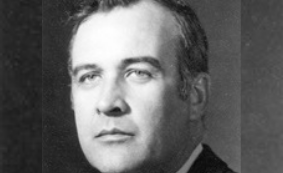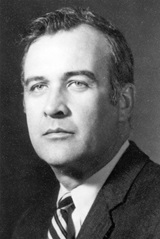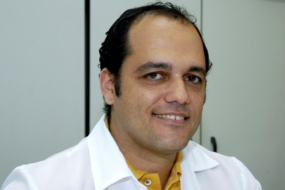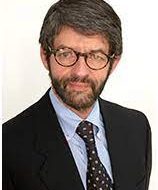
Langfitt’s curve is one of the main legacies of the neurosurgeon; graph depicts changes in intracranial pressure from variations in brain volume

Born in Clarksburg, West Virginia, to a general surgeon father, the American Thomas William Langfitt (04/20/1927 – 08/07/2005), he graduated in biology from Princeton University in 1949. He also attended Johns Hopkins Medical School, graduating doctor in 1953.
After serving in the US Army, Langfitt returned to Johns Hopkins to complete residency in neurological surgery. In 1961, he completed his training and moved to Philadelphia, with the position of head of the Neurological Surgery Section at the Hospital of Pennsylvania.
Eye on the brain
In 1968, the neurosurgeon conducted basic research on intracranial pressure (ICP), cerebral circulation, and brain metabolism—and his findings contributed to the understanding of these phenomena and the treatment of traumatic head injuries.
In 1968, Langfitt became a professor and until 1987 led the Division of Neurological Surgery at the University of Pennsylvania, where he was the lead scientist for head trauma programs, focusing on the control of ICP, then a common cause of death in neurosurgical patients.
Langfitt has also invested in experiments to measure blood flow in the brain, an important factor in neuroimaging techniques such as positron emission tomography (PET) — and was vice president for health affairs at the University of Pennsylvania.
Langfitt curve
One of the main legacies of the neurosurgeon is the so-called cerebral elastance curve, named after him as the Langfitt Curve. Described by Langfitt and his collaborators, this phenomenon, graphically represented, expresses the changes in the ICP from the variations in volume within the brain.
The Langfitt Curve can be divided into four phases. In the first of them, the increase in the intracranial expansive volume is compensated by the outflow of CSF and blood, without an increase in ICP. In the second phase, the compensation mechanisms are exhausted and the PIC increases. In the next step, there is an alteration in the cerebrovascular tone, evolution of the vasodilator cascade with an increase in brain blood volume and an exponential increase in the ICP. In the last phase, there is loss of cerebral autoregulation and ICP has a behavior similar to mean arterial pressure.
Participations
Within the United States, Langfitt has served on several advisory boards and committees, such as the National Institutes of Health. He has written and contributed to over 200 professional publications. He was chairman of the Board of the Association of Academic Health Centers and served as chairman of the Organizing Committee of International Symposia on Increasing Intracranial Pressure and Blood-Brain Flow.
The neurosurgeon was a member of the Institute of Medicine of the National Academy of Sciences and was an honorary member of the Royal College of Surgeons in Edinburgh. He also served on the Board of Directors of the American Association of Neurological Surgeons, where he served as Vice President. Langfitt chaired the Editorial Board of the Journal of Neurosurgery, president of the American Academy of Neurological Surgery. And served on the Board of Trustees at Princeton University. He died at age 78 of miliary tuberculosis.
Sources
Congress of Neurological Surgeons (CNS)
Oregonlive
Newspapers.com
Researchgate
Neurointensivismo
Neurocirurgia Básica – Sebastião Gusmão
Los Angeles Times
PATRIOTA, G. C. Evaluation of dynamic cerebral autoregulation through cerebrovascular reactivity in pigs with balloon-expansive volume simulating an increase in intracerebral hematoma. Thesis presented to the Faculty of Medicine of the University of São Paulo to obtain the title of Doctor of Science. São Paulo, 2017.





